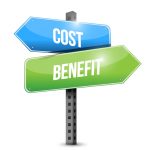Balance sheet essentials: Part 2 – Liabilities
Your balance sheet reveals two key indicators of financial health: assets and liabilities. A completed balance sheet is also a legal requirement of your annual accounts return to the Inland Revenue if you are registered as a limited company or a limited liability partnership (LLP).
In this article we look at what constitutes a liability and how you should record liabilities on your company’s balance sheet.
What is a liability?
At the most basic level, any money that your company owes to customers or creditors is classed as a liability. There are however different classes of liability that need to be recorded separately to generate a legally compliant balance sheet.
What needs to be recorded as a liability?
There are two categories of liability you need to keep track of: current liabilities and long-term liabilities.
Current liabilities are debts that your business needs to repay in the short term, i.e. in the next 12 months or less. Among the items you need to record in the current liabilities balance sheet column are:
- any monies owed to suppliers for goods or services
- short-term loans, overdrafts or other finance options your company has taken out
- tax payments your business still needs to make to HMRC including VAT, PAYE and National Insurance.
Long term liabilities are those which will come due at some point in the future beyond the next 12 months. Make sure that your balance sheet keeps records of:
- any loans or finance deals that are due for payment after one year. Don’t forget to include any directors’ loans
- details of your capital and reserves, including share capital and retained profits after dividends have been paid. If you are an unincorporated business, don’t forget to keep details of any capital invested in the business by the proprietors.
Don’t forget that your balance sheet must keep details of both current and long term liabilities if it is to be legally compliant.
Adding together current liabilities and long term liabilities will give you a complete picture of how much your business owes.
How do records of liabilities help?
Without a proper understanding of your liabilities it is impossible to properly calculate your net asset worth. This is because assets are calculated using the following formula:
Assets = Liabilities + Equity
This formula ensures that assets and liabilities always balance (the clue is in the name!). This also means that by subtracting your total liabilities from your total assets, you can see how much equity remains for your shareholders. It will also reduce the administrative burden come time to file your annual tax return.
As we cautioned in the previous article, as useful as the balance sheet may be, it is still only a tool for assessing financial performance internally. The sheet cannot be used to accurately predict future earnings potential or profitability.


